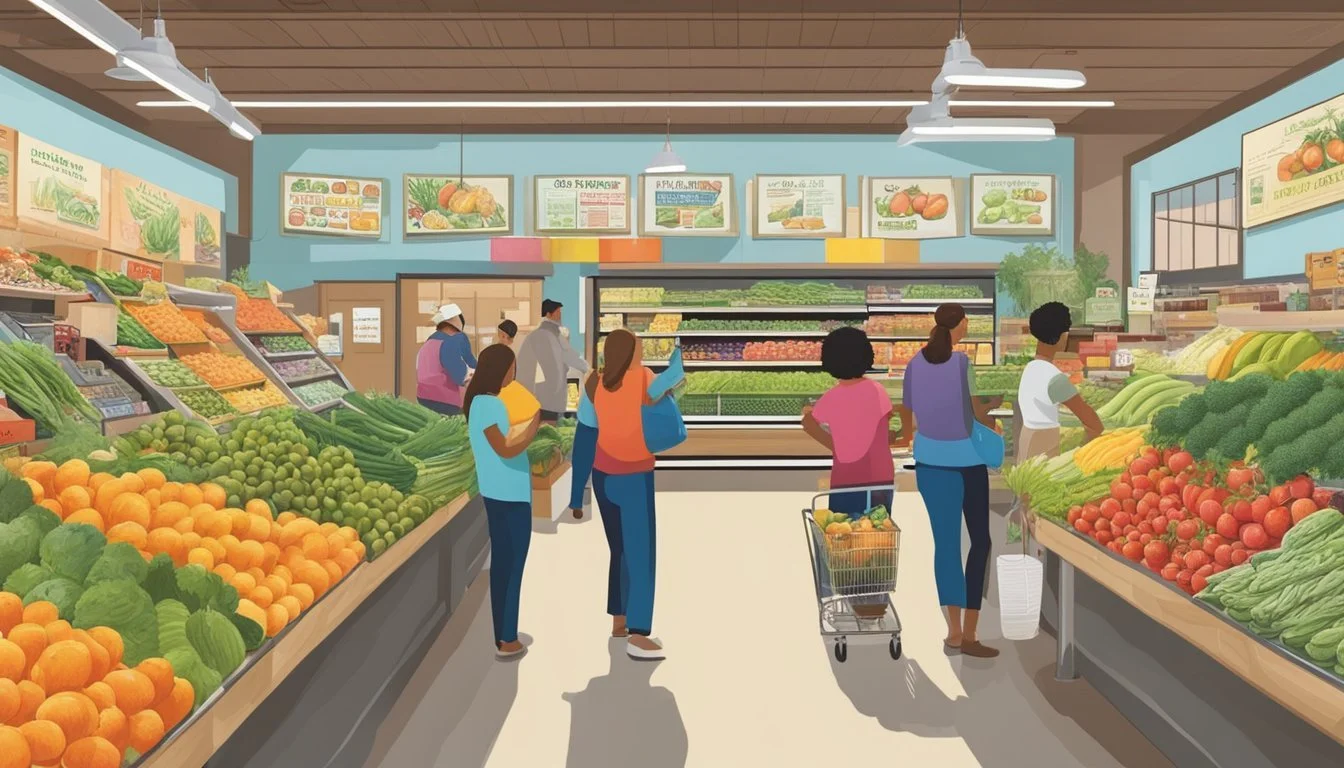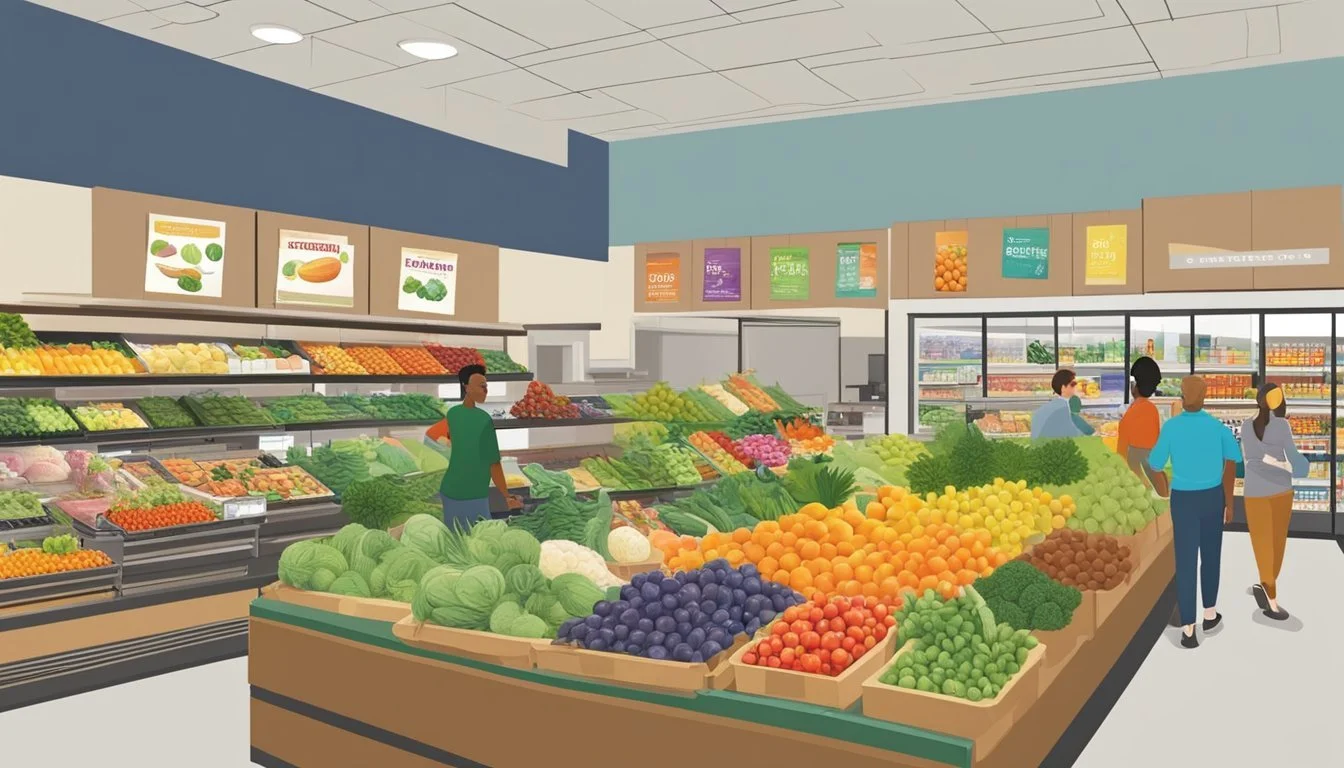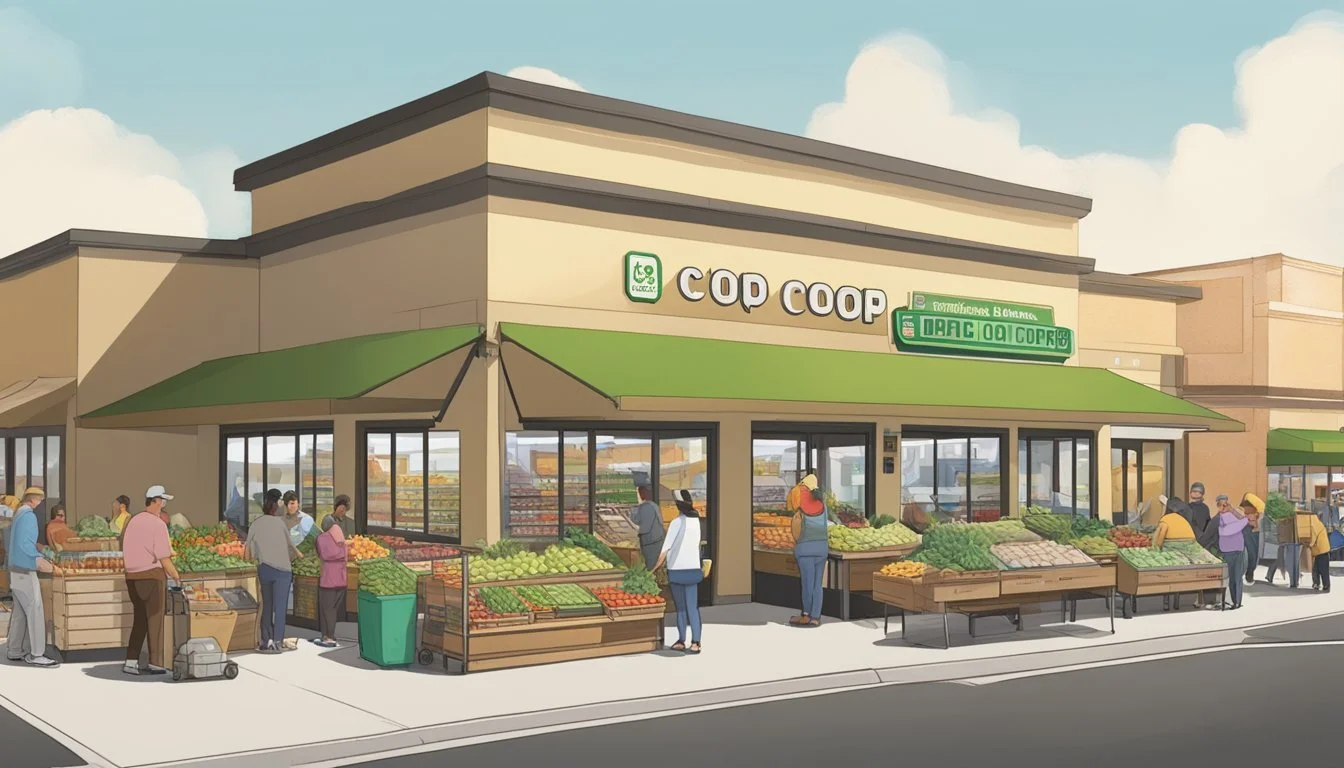Guide to Food Co-Ops in Rancho Cucamonga, CA
Your Local Source for Community-Based Groceries
Food cooperatives, or food co-ops, offer an alternative to traditional grocery shopping by focusing on community-owned and operated food distribution. In Rancho Cucamonga, California, food co-ops are part of a growing movement that prioritizes local produce, ethical sourcing, and communal decision-making. These co-ops play an important role in connecting residents with high-quality, locally-sourced food, fostering a stronger sense of community, and supporting local farmers and food producers.
As an integrative hub of both food and community-centered activities, food co-ops in Rancho Cucamonga enable shoppers to become members, offering them a voice in the operational aspects and product selections, which are typically inclusive of organic and health-conscious options. They serve as more than just retail spaces; they act as community gathering points where values around sustainability, education, and mutual support are just as important as the fresh produce on the shelves.
Navigating through the various food co-ops in the area, one can find a wealth of options that extend beyond just consumer goods. These cooperatives often host workshops, community events, and educational programs that help demystify the food supply chain and promote healthier lifestyles. They are cornerstone institutions that not only provide access to nutritious food but also contribute to the social and economic fabric of Rancho Cucamonga.
What Is a Food Co-Op?
In the landscape of American grocery retail, food cooperatives stand as unique entities that champion community ownership and locally oriented food systems. Particularly, in California, they embody a synthesis of health-conscious provisions and democratic control by their shoppers.
Defining Food Cooperatives
Food cooperatives, or food co-ops, are grocery stores that operate on the principles of collective ownership and democratic governance. Members of a food co-op typically purchase shares, granting them ownership status and a voice in the operational decisions. Key characteristics of food co-ops include:
Member-owned
Democratically governed (one member, one vote)
Community-focused
Subscription to cooperative principles
Unlike conventional supermarkets, which prioritize shareholder profits, food co-ops serve their member-owners by focusing on the sourcing of quality food, sustainability, and fair pricing.
History of Food Co-Ops in California
California has a rich heritage of cooperative movements, dating back to the early 20th century. The state's progressive spirit catalyzed the formation of food cooperatives with a dual aim: to provide access to healthful foods and to foster community resilience.
Early Beginnings: Started as part of the cooperative movement for ethical consumption.
Growth: Evolved through the 1960s and 70s alongside the organic food movement.
Current Landscape: Continues to flourish in cities like Rancho Cucamonga, reflecting California's ongoing commitment to health, ecology, and community.
California's food co-ops were early adopters of organic and natural food retail, setting precursors for today's mainstream acceptance of sustainable eating habits.
Benefits of Joining a Food Co-Op
Joining a food co-op in Rancho Cucamonga, CA offers multiple layers of benefits, spanning personal health to economic impact. Members enjoy access to high-quality, locally-sourced produce and participate in a system that strengthens local economies and bolsters community connections.
Fresh and Local Produce
Food co-ops prioritize fresh, local foods, often sourced directly from nearby farms. In Rancho Cucamonga, members can expect an abundance of citrus fruits, avocados, and leafy greens, ensuring their diet is rich in nutritious, seasonally appropriate food. The direct relationship with growers also supports sustainable agricultural practices.
Availability of fresh produce: Access to seasonally fresh fruits and vegetables.
Support for local agriculture: Partnerships with local farms and producers.
Community Engagement
Co-ops are deeply rooted in their local community. Members in Rancho Cucamonga are not just customers but also co-owners who engage with their co-op through various channels, from voting rights to community events. This engagement fosters a sense of ownership and pride and facilitates the sharing of food knowledge and culinary traditions.
Active participation: Opportunities for members to attend meetings, participate in decision-making, and collaborate on community initiatives.
Education and sharing: Events and workshops to learn more about food, health, and sustainability.
Economic Advantages
Members of a food co-op often find an equitable and economically advantageous system. One's investment in a Rancho Cucamonga co-op ensures that more money stays within the local community, bolstering the local economy and creating a strong network of consumers and producers.
Affordability: Co-ops can provide savings on grocery items due to cooperative buying and reduced reliance on middlemen.
Economic circulation: Invested funds are more likely to be recirculated locally, leading to broader community prosperity.
Through membership in a local co-op, residents of Rancho Cucamonga benefit from fresh and local produce, active community engagement, and the economic advantages tied to supporting and sharing within their community.
How to Join a Food Co-Op
Joining a food co-op in Rancho Cucamonga encompasses understanding the membership enrollment procedure and the financial benefits like patronage dividends. It's a straightforward journey towards participating in a community-centric shopping experience.
Membership Process
Prospective members should begin by locating a food co-op in Rancho Cucamonga through local directories or community boards. Upon finding a suitable co-op, they must visit the establishment to inquire about membership. The food co-op will provide an application form, which requires the applicant's personal details and perhaps a statement of interest. Membership fees are typically due at this stage – the cost varies but is usually a one-time payment that makes the individual a co-op part-owner.
Step 1: Identify a local food co-op
Step 2: Visit the co-op or their website to access the membership application
Step 3: Complete the application form
Step 4: Submit the form along with the required membership fee
Understanding Patronage Dividends
Patronage dividends are a distinctive feature of food co-ops. They represent the profits returned to the members based on the amount of business they conduct with the co-op during a fiscal year. These dividends are an expression of the cooperative principle of member economic participation, where members contribute equitably and control the capital democratically. The specific amount of patronage dividends each member receives is typically determined at the end of the fiscal year, following the co-op's review of its finances.
Eligibility: Based on member's purchases throughout the year
Calculation: After fiscal year-end financial review
Distribution: Can be in cash, store credit, or reinvestment into the co-op
It's important for members to save their purchase receipts if required and attend annual meetings to stay informed about the co-op's financial status.
Contributing to Your Co-Op
In Rancho Cucamonga, CA, food co-ops thrive on the active participation and support of community members. Contributions come in many forms, including volunteer work and financial support through donations or sponsorships.
Volunteer Opportunities
Volunteers are the backbone of food co-ops in Rancho Cucamonga. They offer their time and skills to a range of activities:
Store Operations: They help with the day-to-day running of the co-op, from stocking shelves to assisting customers.
Education and Outreach: Volunteers also play a role in community education about sustainable practices and healthy eating habits.
Event Staffing: Co-op events and workshops often need extra hands, and volunteers make these community gatherings possible.
To become a volunteer, one typically needs to complete a simple application process, which may include a short orientation.
Donation and Sponsorship
Financial contributions are also vital to the co-op's sustainability and growth. Here's how individuals and businesses can contribute:
Donations: Monetary gifts support ongoing operations and special projects. Co-ops may have various levels of donor recognition.
Sponsors: Local businesses gain visibility while supporting the co-op through sponsorship, which can be a great partnership for both the co-op and the company.
Contributions can often be made directly at the co-op's location or through an online platform designated by the co-op.
Food Co-Ops and Education
Food co-operatives in Rancho Cucamonga are more than just food distribution centers; they are hubs for education and community development. These co-ops often provide educational opportunities that focus on food literacy, sustainable agriculture, and community involvement.
Workshops and Classes
Within food co-ops, members and non-members may find an array of educational workshops and classes designed to equip them with practical knowledge and skills related to food. They typically include:
Sustainable Food Practices: Classes on organic farming techniques, composting, and responsible food sourcing.
Healthy Eating: Sessions that teach nutritional values and ways to prepare healthy meals.
Food Economics: Workshops that explain the economic impact of local food systems and the importance of supporting local farmers.
These workshops aim to empower individuals to make informed decisions about their food and its impact on their health and the environment.
Community Gardening Initiatives
Community Gardens play a crucial role in the educational aspect of food co-ops. They provide an experiential learning environment where individuals can:
Learn to Grow Food: Hands-on experience in planting, maintaining, and harvesting crops.
Participate in the Food Cycle: From seed planting to composting, participants learn the full cycle of food production.
Engage in Community-Building: Gardens offer a place to connect with fellow community members, share tips, and cultivate relationships.
These initiatives strengthen community bonds and foster a shared understanding of the value of growing and consuming locally-sourced food.
The Economic Model of Food Co-Ops
The economic model of food co-ops is designed to benefit its members through collective purchasing power and shared profits. This cooperative approach allows members to have a say in the operations and leads to financial advantages such as discounts and potential profit sharing.
Purchasing Power and Discounts
Food co-ops leverage the collective purchasing power of their members to negotiate better prices from suppliers. By buying in bulk and cutting out intermediaries, co-ops manage to secure discounts on products. This advantage is typically passed on to the members, who enjoy lower prices compared to traditional retail settings. The discounts may vary, but they can significantly affect affordability and access to high-quality goods.
Bulk Buying: Members benefit from lower prices through large-volume purchases.
Supplier Relationships: Direct relationships with suppliers can mean better terms and additional discounts.
Profit Sharing and Decision-Making
Members of a food co-op are usually part-owner of the cooperative, thereby having a stake in the financial success of their store. They elect a board of directors that makes decisions on their behalf, including the reinvestment of profits and distribution among members. Profit sharing can take many forms:
Annual Rebates: Members may receive a portion of the profits based on their purchases throughout the year.
Democratic Decision-Making: Every member has a voice, typically one vote, in electing the board of directors and in critical decisions affecting the co-op.
Cooperatives are built upon the principle that economic benefits should be distributed equitably among those who contribute to the wealth of the business. This model of profit sharing and inclusive decision-making enhances community resilience and strengthens local economies.
Food Co-Ops in the Digital Age
Food co-ops are harnessing the power of digital tools to expand their reach and streamline their operations. A strong online presence and innovative distribution technologies are crucial for modern food co-ops.
Online Presence and Social Media
Food co-ops in Rancho Cucamonga are actively maintaining an online presence to connect with the community and promote their values. Their websites serve as a resource for location information, operational hours, and event announcements. Social media platforms like Facebook and Instagram are utilized to engage with members and non-members of all ages. They share updates on new product arrivals, membership information, and educational content related to sustainable food practices.
Technological Advancements in Food Distribution
Food co-ops have adopted modern technology to enhance the efficiency of food distribution. This includes the use of inventory management software and online ordering systems. These tools allow them to offer members the convenience of purchasing goods online and providing options for local delivery or in-store pickup. Additionally, some co-ops are exploring mobile applications that can offer users an on-the-go experience for managing their co-op shopping and membership benefits. Such advancements are reinventing the way communities interact with and support their local food systems.
Expanding the Network
In Rancho Cucamonga, the network of food co-ops is growing, aiming to strengthen the community's access to sustainable and locally sourced food options.
Joining the Riverside Food Systems Alliance
The Riverside Food Systems Alliance plays a significant role in expanding the network of food co-ops. By joining this alliance, food co-ops gain access to a wider pool of resources, knowledge, and support systems. This partnership is pivotal for food co-ops to amplify their impact on local food systems and to advocate for food sovereignty and education.
Benefits of joining:
Shared knowledge and resources
Strengthened bargaining power
Setting Up a Food Buying Club
Forming a food buying club in Rancho Cucamonga can further extend the outreach of food co-ops. These clubs operate on the principle of collective purchasing power, providing members with access to fresh, high-quality food at reduced prices.
Steps to initiate a buying club:
Gather a group of committed members
Connect with local producers and suppliers
Organize order and distribution logistics
With each addition to the network, from alliances like the Riverside Food Systems Alliance to the creation of a buying club, Rancho Cucamonga enhances its collective ability to support a health-conscious, economically viable community through cooperative efforts.
Building a Sustainable Community
Food cooperatives in Rancho Cucamonga are not just food distribution points, but cornerstones in building a sustainable community. They blend the ethos of cooperation and sustainability into their operational principles, thereby supporting both the environment and local agriculture.
Co-Op Principles and Environmental Impact
Food co-ops typically operate on a model that emphasizes community ownership and democratic decision-making. In Rancho Cucamonga, these cooperatives take significant steps to minimize their environmental impact. By prioritizing local, organic, and non-GMO products, they help to reduce the carbon footprint associated with long-distance transport of food. The co-ops also often focus on recycling, composting, and responsible waste management, which directly contributes to maintaining cleaner soil and reducing landfill use.
The Role of Co-Ops in Local Farming
The community's co-ops act as catalysts for local farming by providing farmers with a consistent market for their produce. They encourage sustainable farming practices, such as the use of natural fertilizers and pesticides that help to preserve the quality of the dirt and surrounding ecosystems. Through their support, co-ops help to ensure that farming remains a viable livelihood in Rancho Cucamonga and that farming practices contribute to the health of the environment.
Future Prospects of Food Co-Ops
The landscape for food co-operatives in Rancho Cucamonga, CA shows promising trends. Food co-ops continue to evolve, adapting to the competitive marketplace while still embracing their community-oriented ethos. They are eyeing opportunities in various areas:
Sustainability: With a growing consumer interest in sustainable practices, food co-ops are increasingly adopting regenerative agriculture techniques. This approach aligns with the consumer's desire for ethical and environmentally-friendly sourcing.
Technology: Food co-ops are utilizing advanced technologies to streamline operations, improve customer experiences, and manage inventories efficiently. Innovations in software allow for better data analysis and engagement with members.
Inclusivity: There is a concerted effort to expand the accessibility of food co-ops, ensuring they serve a diverse customer base. This includes addressing affordability and offering products that cater to a range of cultural tastes.
Community Impact: They are expected to strengthen their contributions to local economies and social fabric by supporting local farmers and artisans, and offering educational programs on food and nutrition.
Given the current trajectories:
Competition vs. Community: While larger grocery chains pose stiff competition with their economies of scale, food co-ops are uniquely positioned to harness their community focus as a differentiating factor.
Costs vs. Value: High startup costs remain a challenge, yet the intrinsic value offered through quality products and community benefits justifies these investments.
The outlook for food co-ops in the area remains robust, shaped by these trends and their ability to remain adaptive and responsive to the needs of their members and the broader community.









